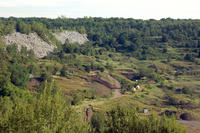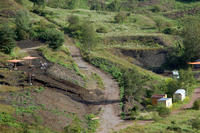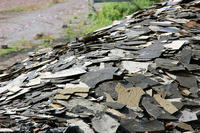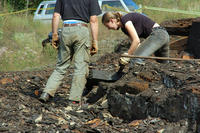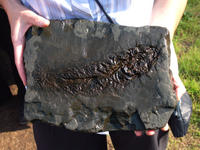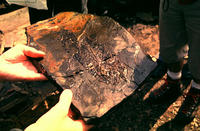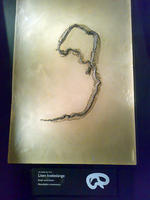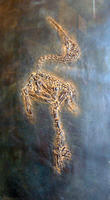You are in: Europe -> Germany -> Messel Pit Fossil Site, and traditional search or Image Gallery will yield results of this site only
Messel Pit Fossil Site
| Site number: | 720 |
|
| Type of site: | Natural | |
| Date: | 57-36 mill.yrs | |
| Date of Inscription: | 1995 | |
| Location: | Europe, Germany, State of Hesse (Hessen), District of Dramstadt-Dieburg | |
Up to 75 images are shown here. Click on each for more details or on Image Gallery for more images.
| Description: | Messel Pit is the most affluent site in the world for studying the living environment of the Eocene of 57-36 million years ago. Above all, it provides matchless information concerning the early stages of the mammal evolution and comprises of remarkably well-preserved mammal fossils – a scope of both fully articulated skeletons as well as the stomach contents of the period’s animals. --WHMNet paraphrase from the description at WHC Site, where additional information is available. | |
| The Messel Pit is a disused quarry near the village of Messel, about 35 km southeast of Frankfurt am Main, Germany. Bituminous shale was mined there. Because of its plethora of fossils, it has significant geological and scientific importance. The Messel Pit was declared a UNESCO World Heritage site on 9 December 1995. The area around the Messel Pit is believed to have been geologically and tectonically active during the Eocene, leading scientists hypothesize that events much like 1986 gas releases at Lake Nyos, Africa could account for the large deposition of non-aquatic species. Periodic subsurface shifts possibly released large concentrations of reactive gases (such as carbon dioxide and hydrogen sulfide) into the lake and adjoining ecosystems, killing susceptible organisms. During one of these releases, birds and bats might have fallen in if near the lake surface, and terrestrials could be overwhelmed when near the lake shore. The Messel Pit provides the most preserved evidence of Geiseltalian flora and fauna so far discovered. Most other sites are lucky to contain partial skeletons, but Messel boasts extensive preservation of structural integrity, even going so far as to preserve the fur, feathers, and "skin shadows" of some species, and the diversity of species is no less astonishing (thanks in part to the periodic gas attacks). --Wikipedia. Text is available under the Creative Commons Attribution-ShareAlike License. | ||
| Source: | http://whc.unesco.org/en/list/720 | |
| Reference: | 1. UNESCO World Heritage Center, Site Page. | |




